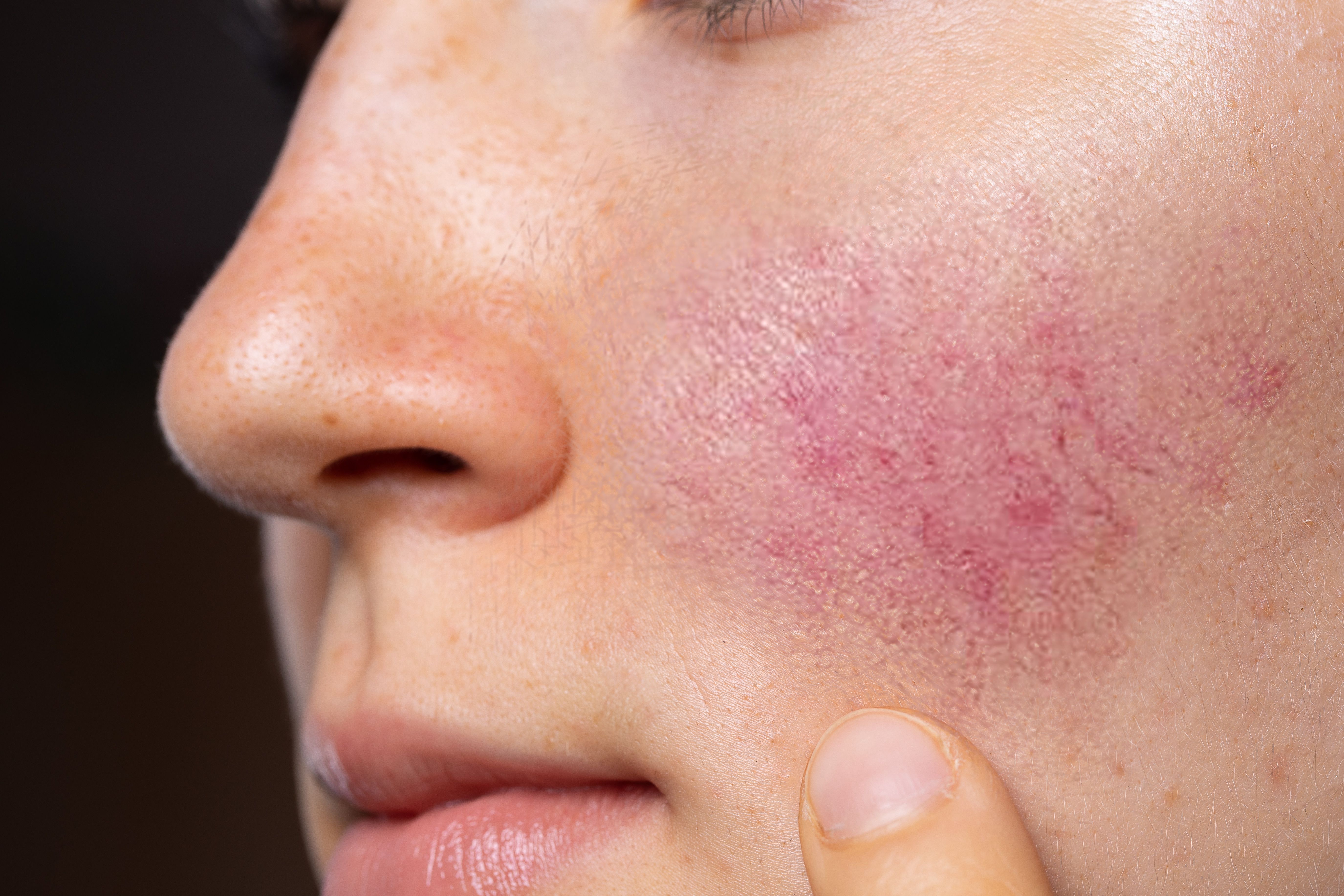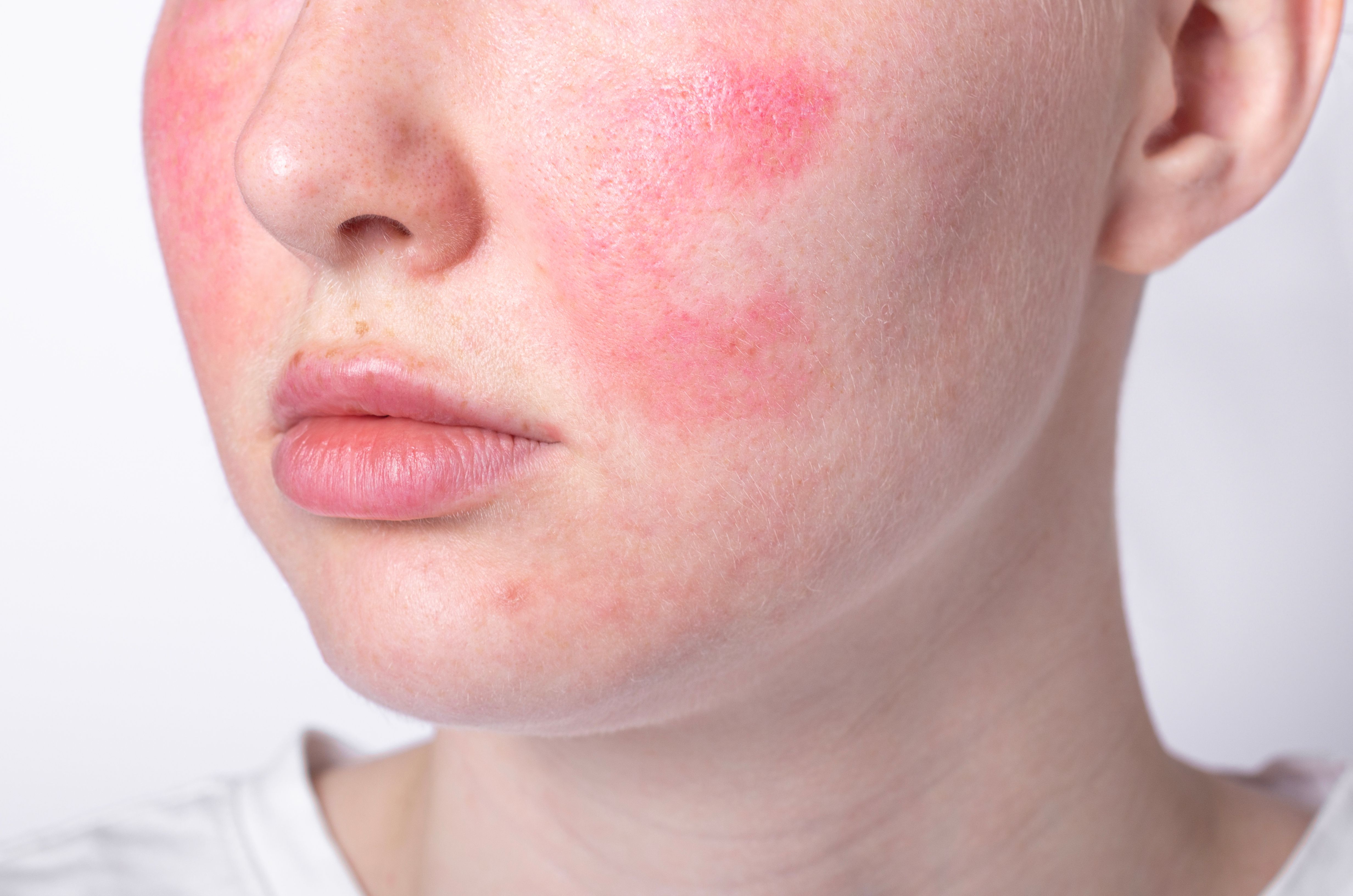- Acne
- Actinic Keratosis
- Aesthetics
- Alopecia
- Atopic Dermatitis
- Buy-and-Bill
- COVID-19
- Case-Based Roundtable
- Chronic Hand Eczema
- Chronic Spontaneous Urticaria
- Drug Watch
- Eczema
- General Dermatology
- Hidradenitis Suppurativa
- Melasma
- NP and PA
- Pediatric Dermatology
- Pigmentary Disorders
- Practice Management
- Precision Medicine and Biologics
- Prurigo Nodularis
- Psoriasis
- Psoriatic Arthritis
- Rare Disease
- Rosacea
- Skin Cancer
- Vitiligo
- Wound Care
Quiz
Article
QUIZ RECAP: Test Your Knowledge of Rosacea Etiology, Types, and Triggers
Author(s):
Earlier this week, we shared our first Rosacea Awareness Month quiz. Review the answers and your responses below.
This week we asked the question: How much do you know about rosacea and its etiology, types, and triggers?
Haven't taken our quiz yet? Pause before reading below and follow this link to complete it: here.
Below, we recap our first quiz and the correct answers to each question.
Question 1: Which of the following is not considered a trigger of rosacea?
Response options: Exposure to sunlight; Stress; Lack of exercise/sedentary lifestyle; Alcohol consumption
Correct response option: Lack of exercise/sedentary lifestyle
Various factors can trigger facial flushing, ranging from exposure to sun or wind to consuming hot drinks, spicy foods, or alcohol. Extreme temperatures, emotional stress, and vigorous exercise can also induce flushing. Additionally, certain medications like blood pressure drugs that dilate blood vessels, as well as some cosmetic, skin, and hair care products, may contribute to facial flushing as well.1
Question 2: Who is most likely to develop rosacea?
Response options: Patients with darker skin types; Women, particularly in menopause; Patients under 30 years of age; Individuals without a history of smoking
Correct response option: Women, particularly in menopause
Individuals who have skin prone to sunburn, fall within the age range of 30 to 50 years, have a history of smoking, or have a family member with rosacea are at increased risk for developing the condition.1
Rosacea research indicates a higher occurrence among women compared to men. Factors contributing to its likelihood include being 30 years old or older, having fair skin with blonde hair and blue eyes, having a family history of rosacea or severe acne, experiencing frequent acne breakouts or cysts, and undergoing menopause.2
Question 3: Which of the following is not considered a common symptom of rosacea?
Response options: Skin thickening; Visible veins; Swollen bumps; Eye problems
Correct response option: Skin thickening
Thickening of the skin, known as rhinophyma, is a less common manifestation of untreated rosacea, more prevalent among men than women. While fewer individuals experience this symptom, it typically appears on the nose but can also affect other facial areas like the chin, ears, forehead, or eyelids.3
Question 4: Which of the following is the most common type of rosacea?
Response options: Erythematotelangiectatic; Papulopustular; Phymatous; Ocular
Correct response option: Erythematotelangiectatic
Erythematotelangiectatic rosacea is the most prevalent type of rosacea, characterized by symptoms such as flushing, redness, and visible blood vessels, primarily affecting the face but potentially extending to the scalp and neck. Additional sensations like warmth, swelling, and tingling may accompany these symptoms.4
Question 5: While the cause of rosacea is not yet fully understood, which of the following has not been considered as a cause or contributor?
Response options: Mites; Genetics; Underlying blood vessel problems; Serum vitamin D deficiency
Correct response option: Serum vitamin D deficiency
The exact cause of rosacea remains unknown, although several theories exist. Inflammation is believed to play a significant role in key symptoms like skin redness and rash, yet the underlying reasons for inflammation are not fully understood. Factors contributing to inflammation may include heightened skin sensitivity, exposure to environmental stressors like UV light, and microbial presence on the skin. Both genetic and environmental factors are thought to contribute to the development of rosacea.5
References
- Mayo Clinic. Rosacea - Symptoms and causes. Mayo Clinic. Accessed April 12, 2024. https://www.mayoclinic.org/diseases-conditions/rosacea/symptoms-causes/syc-20353815
- American Academy of Dermatology Association. What causes rosacea? American Academy of Dermatology Association. Accessed April 12, 2024. https://www.aad.org/public/diseases/rosacea/what-is/causes#:~:text=However%2C%20research%20shows%20that%20women,blonde%20hair%20and%20blue%20eyes
- American Academy of Dermatology Association. Rosacea: Signs and symptoms. American Academy of Dermatology Association. Accessed April 12, 2024. https://www.aad.org/public/diseases/rosacea/what-is/symptoms
- VuCare. Types of rosacea. VuCare. Accessed April 12, 2024. https://www.vucare.com/types-of-rosacea/#:~:text=Erythematotelangiectactic%20rosacea%20is%20the%20most,affect%20the%20scalp%20and%20neck.
- National Institute of Arthritis and Musculoskeletal and Skin Diseases. Rosacea. National Institute of Arthritis and Musculoskeletal and Skin Diseases. Accessed April 12, 2024. https://www.niams.nih.gov/health-topics/rosacea#:~:text=It%20may%20in%20part%20be,in%20the%20development%20of%20rosacea.
Newsletter
Like what you’re reading? Subscribe to Dermatology Times for weekly updates on therapies, innovations, and real-world practice tips.















